A rare breed that is not well known outside of its native Sweden, the Swedish flower hen has become popular with chicken enthusiasts who are looking for an intelligent, curious, gentle bird to add to their flock.
In addition to its personality, the unique color patterns and the chicken’s ability to lay a decent amount of eggs make it an excellent choice for many chicken keepers.
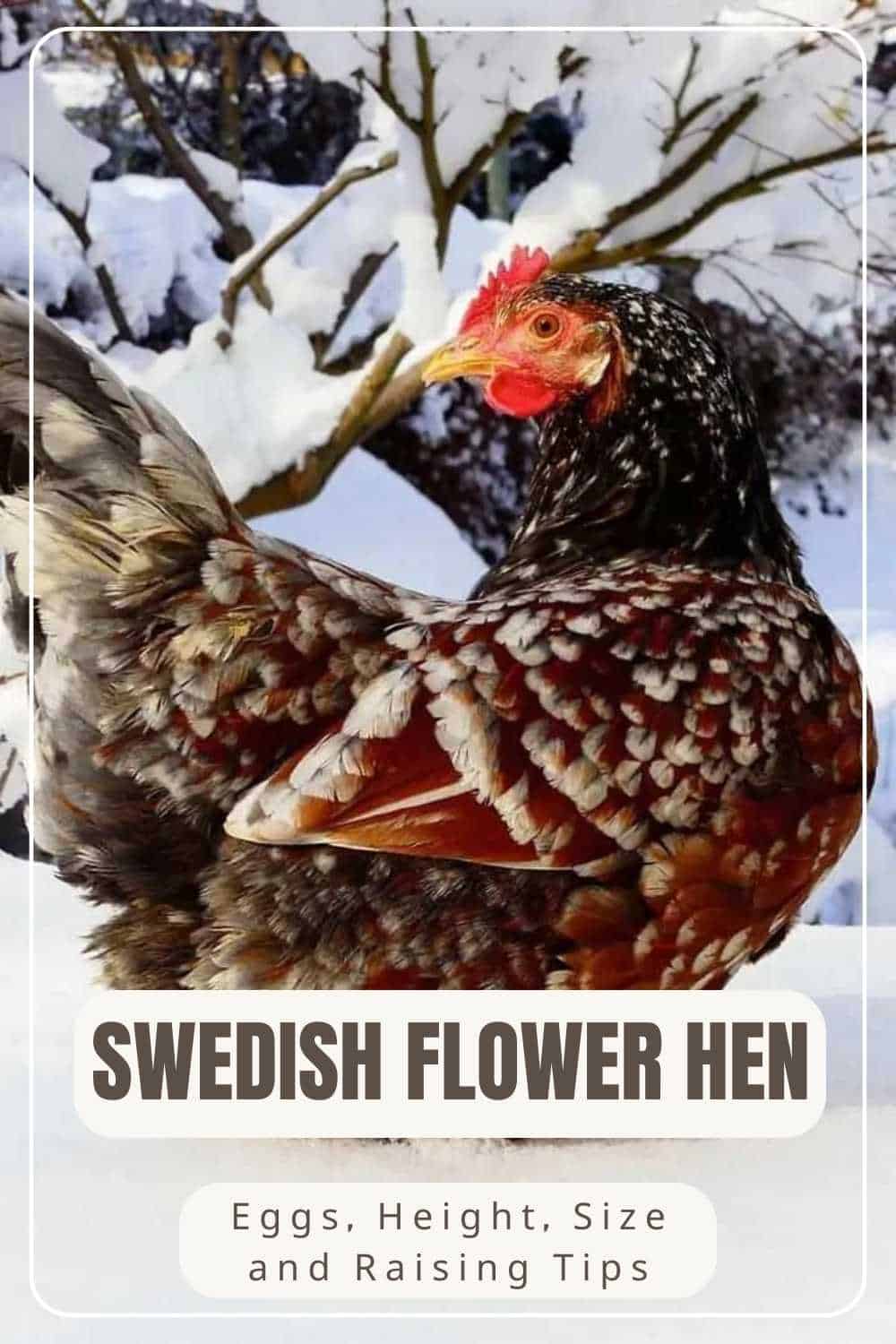
History of Swedish Flower Hens
The Swedish flower hen is one of the traditional breeds of Sweden—as well as the largest native chicken to Sweden—and was most likely used for both meat and egg production. The feathers of the chicken were probably used for stuffing pillows or blankets as well.
The flower hen was not created for any particular purpose. In fact, it was most likely not bred by people at all. Instead, it is known as a landrace chicken. A landrace chicken is a bird that adapted to its environment naturally, with strong examples of chicken breeding and the weaker genes dying out.
The Swedish flower hen most likely descended from chickens brought to Sweden by settlers, which were then left to roam more or less wild. Farmers probably did not spend too much time or energy caring for these birds. Instead, the flower hen would have had to find food and places to roost and nest for itself.
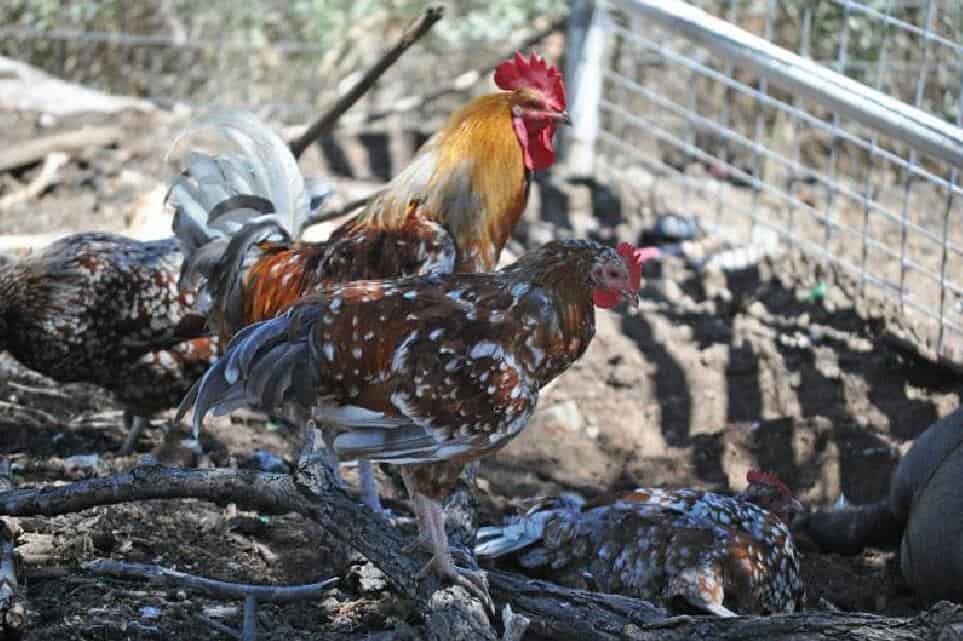
As the popularity of the fast-growing, highly productive industrial hen rose, the popularity of the Swedish flower hen decreased. This led to a sharp decline in the already rare chicken, and the number of birds dwindled to only about 500 in total.
In the 1980s, chicken enthusiasts and conservationists stepped in. Three different breeding colonies of Swedish flower hens were discovered in different towns. In Bomb, the chickens discovered were crested, meaning they had a plume of feathers on their heads. In Earp and Tofta, the Swedish flower hens found were not crested.
The Swedish Genetic Project instigated a breeding plan to restore the chicken breed. In addition to the breeding plan, 15 Swedish flower hens were sent to the United States in 2010, and from there, the breed began to gain notice from American enthusiasts.
By 2014, the population of the Swedish flower hen breed had tripled. Today, many enthusiasts have made it their mission to repopulate this breed.
Although the chicken is still relatively unknown, it can now be purchased throughout North America and Europe. Chicks are somewhat more expensive than other chicken breeds, but the price is unlikely to be too exorbitant.

Breed Standard and Appearance
- Hens weigh five and a half pounds, roosters weigh eight pounds
- Feathers are white-tipped
- Chickens display a variety of base colors
- Birds can be either crested or non-crested
Swedish flower hens have not been recognized by any poultry associations outside of Sweden, so there is no true breed standard for this chicken. However, many breeders and enthusiasts of the breed look for certain colors, patterns, weights, and body sizes to ensure that their flower hens appear as they should.
The most distinguishing characteristic of this chicken breed’s appearance is the bird’s coloring. Although Swedish flower hens can have a range of base colors, including yellow, red, blue, and black, they all display a millefleur pattern. This means the feathers are tipped in white.
The word millefleur means “a thousand flowers,” and this is what the white patterning of the feathers looks like and where the chicken got its name. In addition, some birds display both white and black tips. These chickens are said to have a snow leopard pattern.
Because some of the rediscovered flower hens were crested and others were not, both crested and non-crested birds are considered to be acceptable. Otherwise, the feathers along the body lie flat. The legs are generally yellow but maybe mottled with black and do not have feathers.
Swedish flower hens grow to about five and a half pounds, while roosters of the breed can reach eight pounds.
Personality and Temperament
Swedish flower hens are often considered by their keepers to be some of the smartest, most curious birds in the flock. They may learn to come when called and may follow their keeper around. In addition, this chicken is said to be relatively nonaggressive. It will not often pick fights with other birds and does not generally peck at people.
These chickens are quite friendly, but they are also quite independent. Although they enjoy human company, they do not need it, perhaps due to the way in which the breed was developed. These birds are excellent at foraging and are easy to take care of. They can largely be left to care for themselves.
In addition to a friendly attitude, Swedish flower hens tend to be quite calm. They are not easily ruffled by disturbances such as loud sounds.
This makes the Swedish flower hen a good choice not only as an addition to an existing flock but also for the 4-H program, Especially for Also, because they are so calm, gentle, and easy to care for, these birds are a good choice for beginning chicken enthusiasts who may not have too much experience.
Swedish Flower Hen Egg Laying

- Lays around 150 to 200 eggs each year
- Eggs are extra large
- Eggs are off-white or pale brown
Swedish flower hens are good at laying eggs and can provide a steady quantity. On average, the chicken will lay between 150 and 200 eggs each year or about three to four eggs each week.
When they first begin laying, the eggs of the Swedish flower hen can be quite small. However, hens mature quickly and as they do, the eggs become much larger. Generally, Swedish flower hens produce extra-large eggs. The eggs themselves are very pale brown or off-white.
Swedish flower hens are not known as particularly broody chickens. Once the eggs have hatched, the hens tend to be caring mothers to their chicks. However, most hens of this breed do not have much interest in brooding, or sitting on the nest, until the eggs incubate.
This means that most of the time if keepers are hoping for chicks, the eggs of the Swedish flower hen will need to be placed in an incubator. Eggs can also be placed under a hen that seems inclined to brood, even if that hen is not of the Swedish flower breed.
Health Issues and Care
Swedish flower hens are incredibly healthy, hardy birds. They are not susceptible to many diseases or illnesses and generally live long and healthy lives. In fact, Swedish flower hens can live for about 10 years, which is longer than many chicken breeds.
Swedish flower hens should, like any chicken, be given at least two square feet of space per bird if they are to be enclosed. More space is a healthier, more comfortable option, particularly for this breed, as it prefers to have room to roam.
Like other chickens, Swedish flower hens are at their healthiest when they receive a varied, nutritious diet. A good diet can also help to support or boost egg production.
Hens that are offered calcium supplements, such as oyster shells, or vegetables are generally stronger and can produce more eggs. It is also important, particularly in laying hens, to provide a constant, clean water source.
3 Tips for Raising Swedish Flower Hens
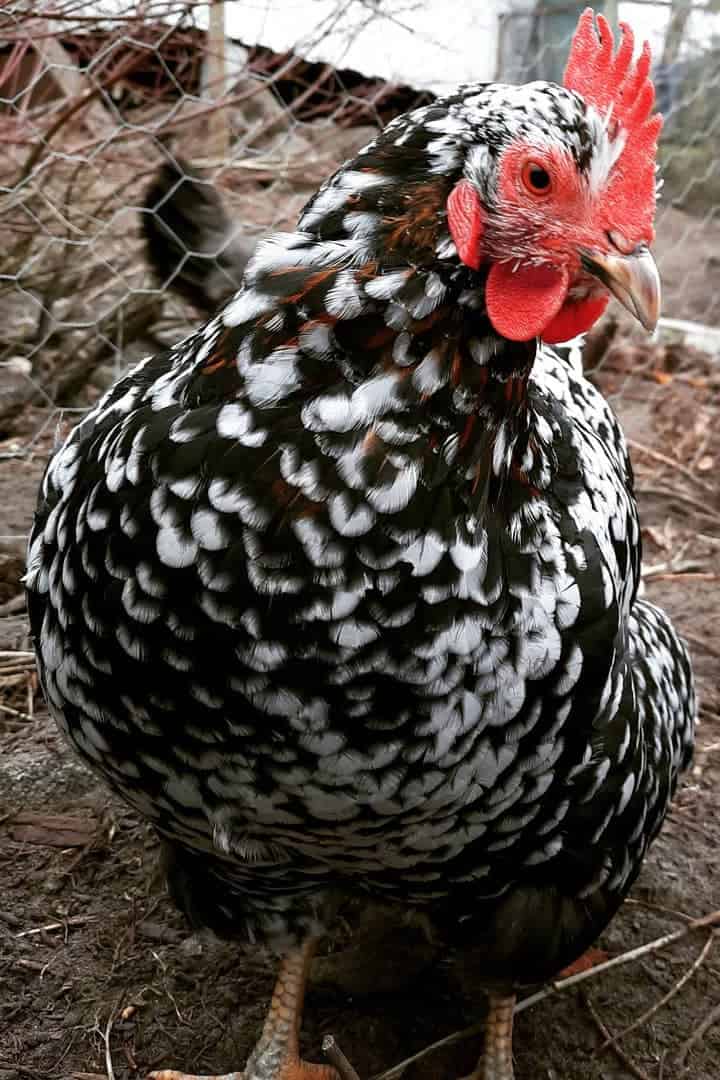
- Comfortable in a variety of climates
- Enjoys the ability to roam freely
- Roosters can be loud
Due to their origins, Swedish flower hens are a chicken breed that is comfortable in a variety of climates. They can tolerate heat well as long as they are provided with adequate water and shade.
They also tolerate the cold and can even withstand freezing temperatures as long as they have somewhere warm and safe to roost. This tolerance makes the chicken a good option for a variety of keepers.
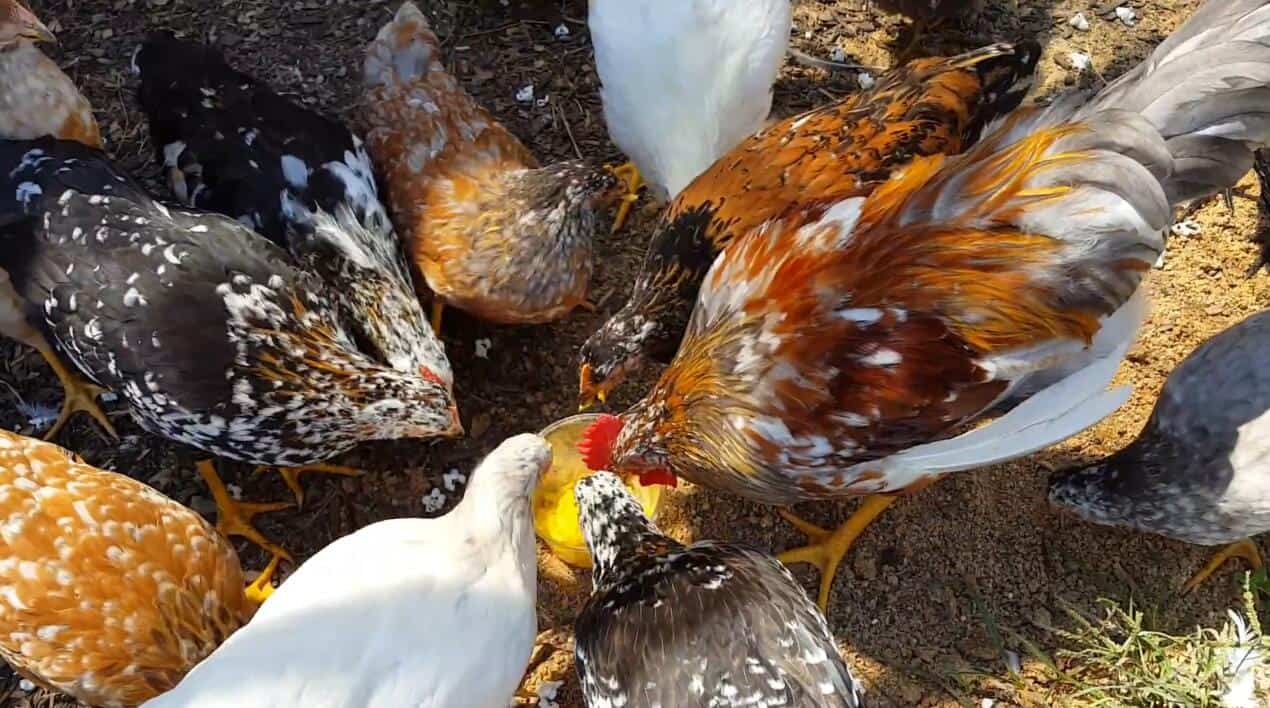
Swedish flower hens enjoy human company but do well when left to their devices. Because they are so intelligent, they enjoy exploring their surroundings. This means that they like to have a wide area to roam.
In addition, their intelligence makes them wary of predators, and they can be quite clever in escaping dangerous situations. These attributes make the Swedish flower hen an excellent free-range chicken. Free-ranging can also help to supplement the Swedish flower hen’s diet, as they are good at foraging.
One thing to keep in mind when considering Swedish flower hens is that the crow of the rooster can be quite loud and piercing. For those who do not mind their chickens making noise, this is no problem. However, it may be an issue for people who live in more crowded areas or are considering the Swedish flower hen as a backyard chicken.
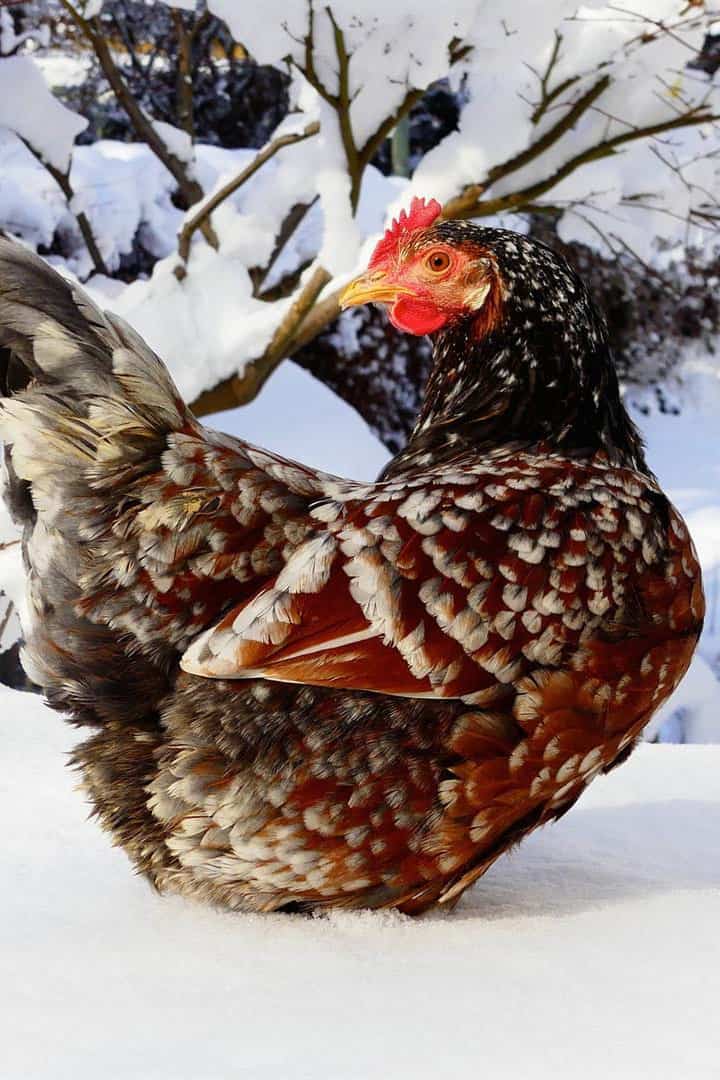
Summary
With a charming, intelligent personality, beautiful feather colors, and good egg production, the Swedish flower hen is an excellent choice for a wide range of keepers.
Although it was once largely unknown even in its home country, many chicken enthusiasts have quickly come to realize what a gem the Swedish flower hen is and are eager to add this chicken to their flocks.


Joseph Hudson has been raising chickens for over 15 years. In 2018, he completed the Agriculture & Natural Resources program at Mt. San Antonio College. He currently raises over 1400 chickens on his 7.5-hectare farm. He keeps sharing his experience on raising healthy and happy chickens on Chicken Scratch The Foundry.
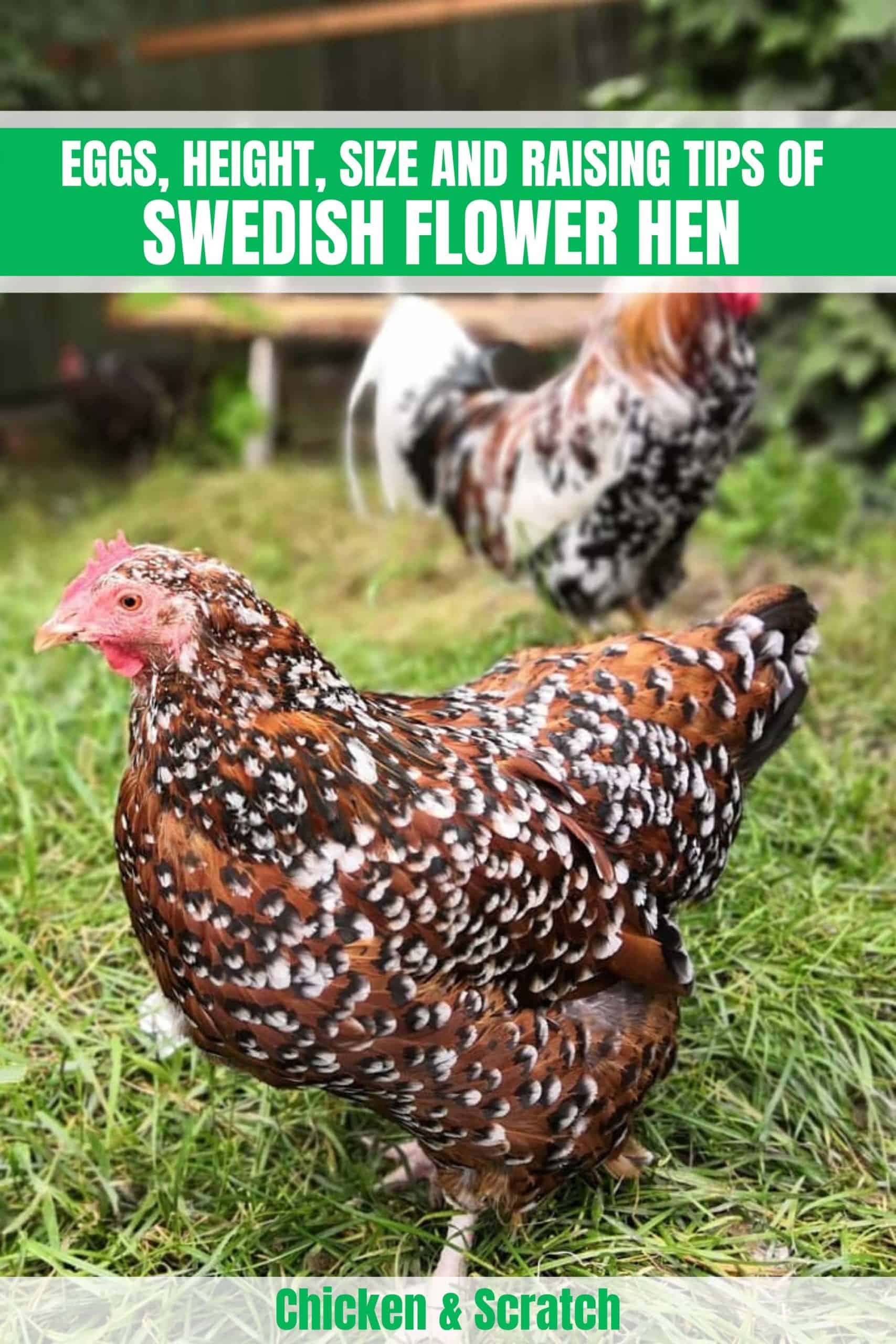







Excellent information on a lovely hen.
Great breed presentation.
If you are looking to buy this breed though it can be confusing because there are two Swedish breeds that can be called “Swedish Flower hen” in English.
I think this article refers to the older breed that is called Skånsk blomme in Swedish (Skåne is a region in southern Sweden, blomme means flowery)
The other breed is called “Fifty Five Flowery” after the year it was created.
They are very different breeds but both have interesting qualities.
Interesting comment Bianca. I love these chickens! Are you in Sweden and do you have any contacts in the chicken breeding world? I would like to find out if any of these chickens (I like the older breed from the upper photo) have been imported to South Africa and if so who can I contact to start keeping and breeding these amazing chickens. I wonder how one imports the best stock? Too many questions LOL, thanks,
Helen
My Swedish flower hen is very confusing to me.
She is as big as a rooster with long yellow legs a body with lots of colors but mainly flame red and a fluffy black tail. However she has a head like a hen and has never crowed and runs away from the other hens. They do not bother her. she is about 4-5 months old so has not laid an egg yet.
Sounds like your hen may be a young rooster. Has time revealed all?